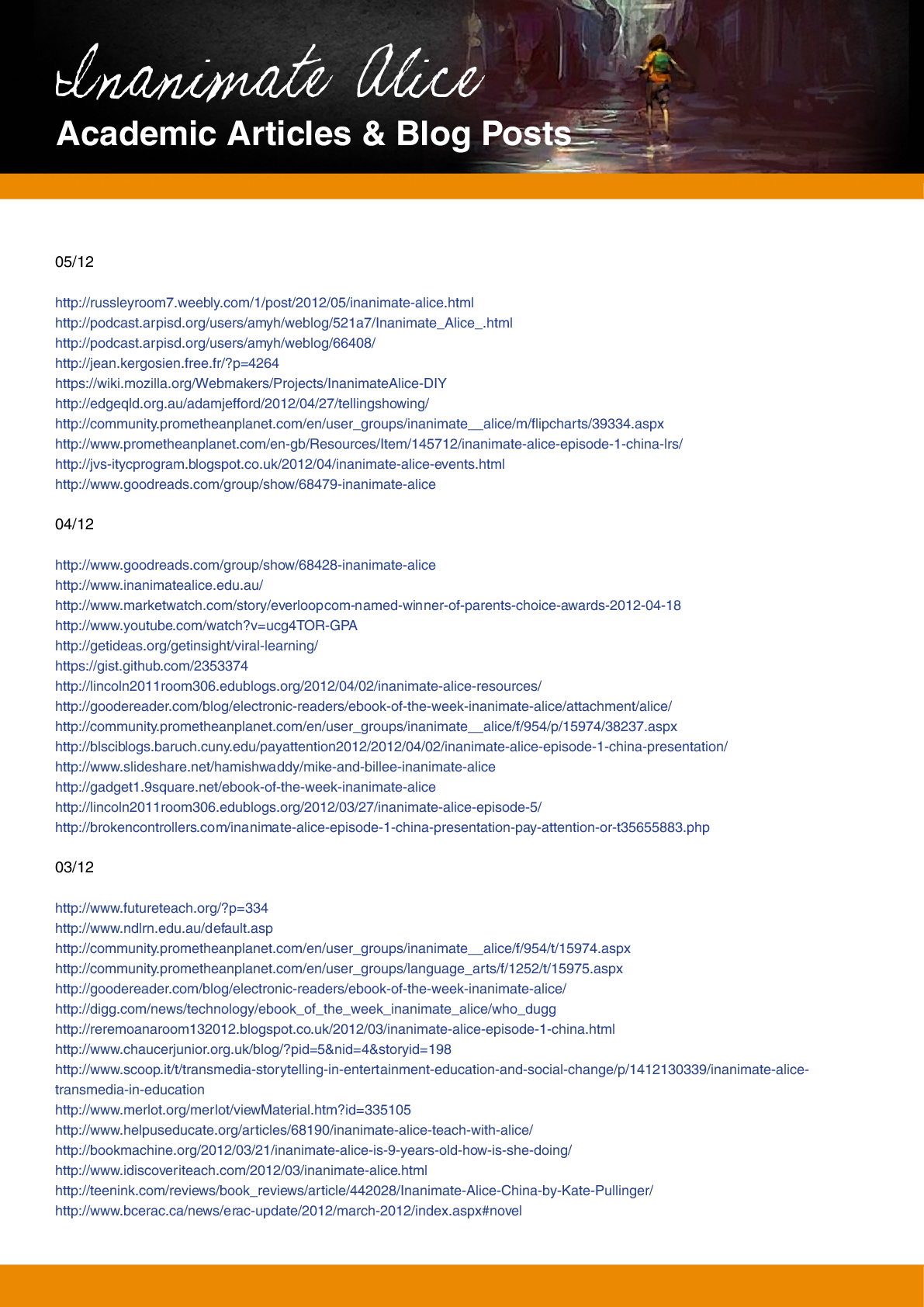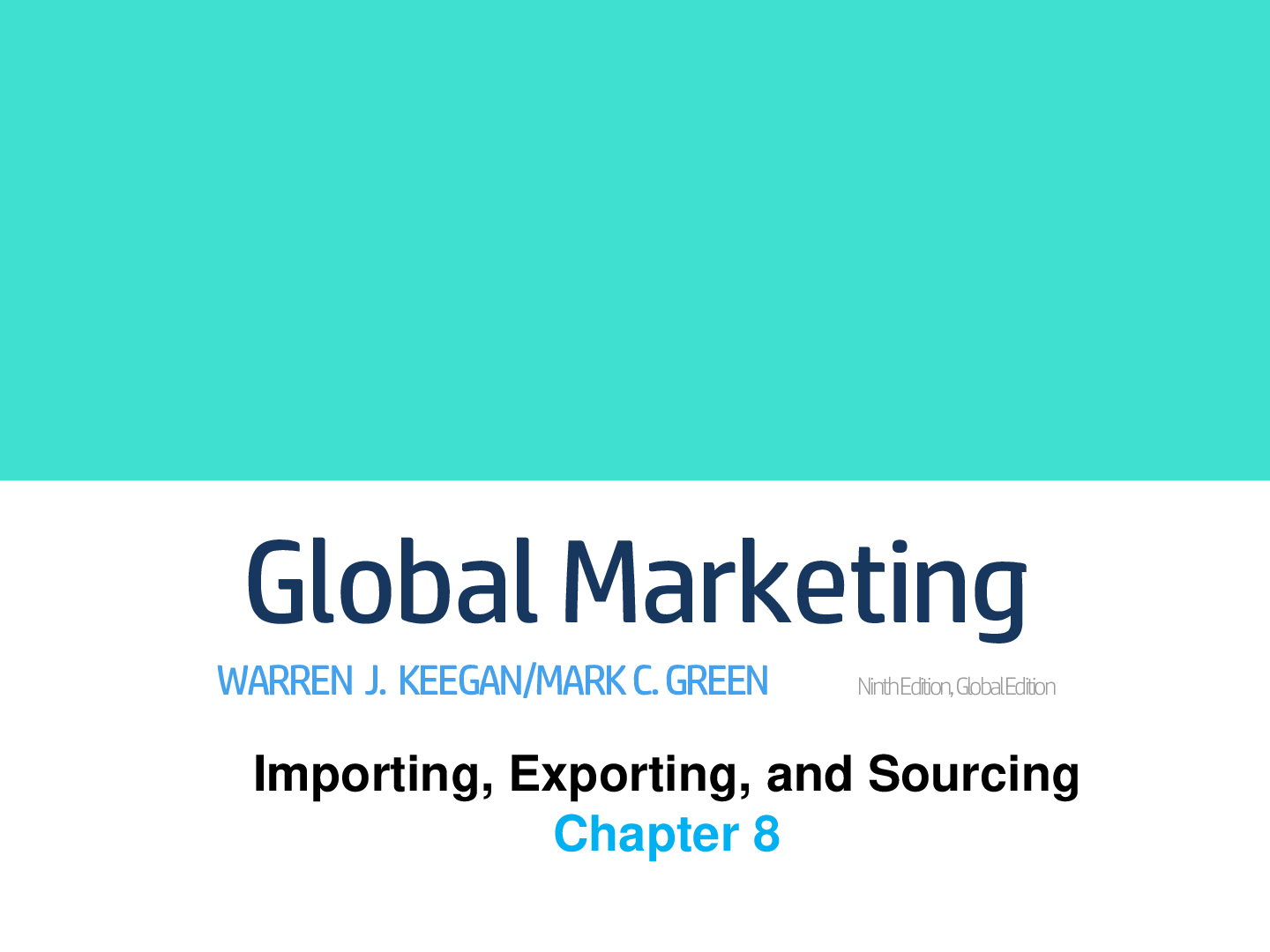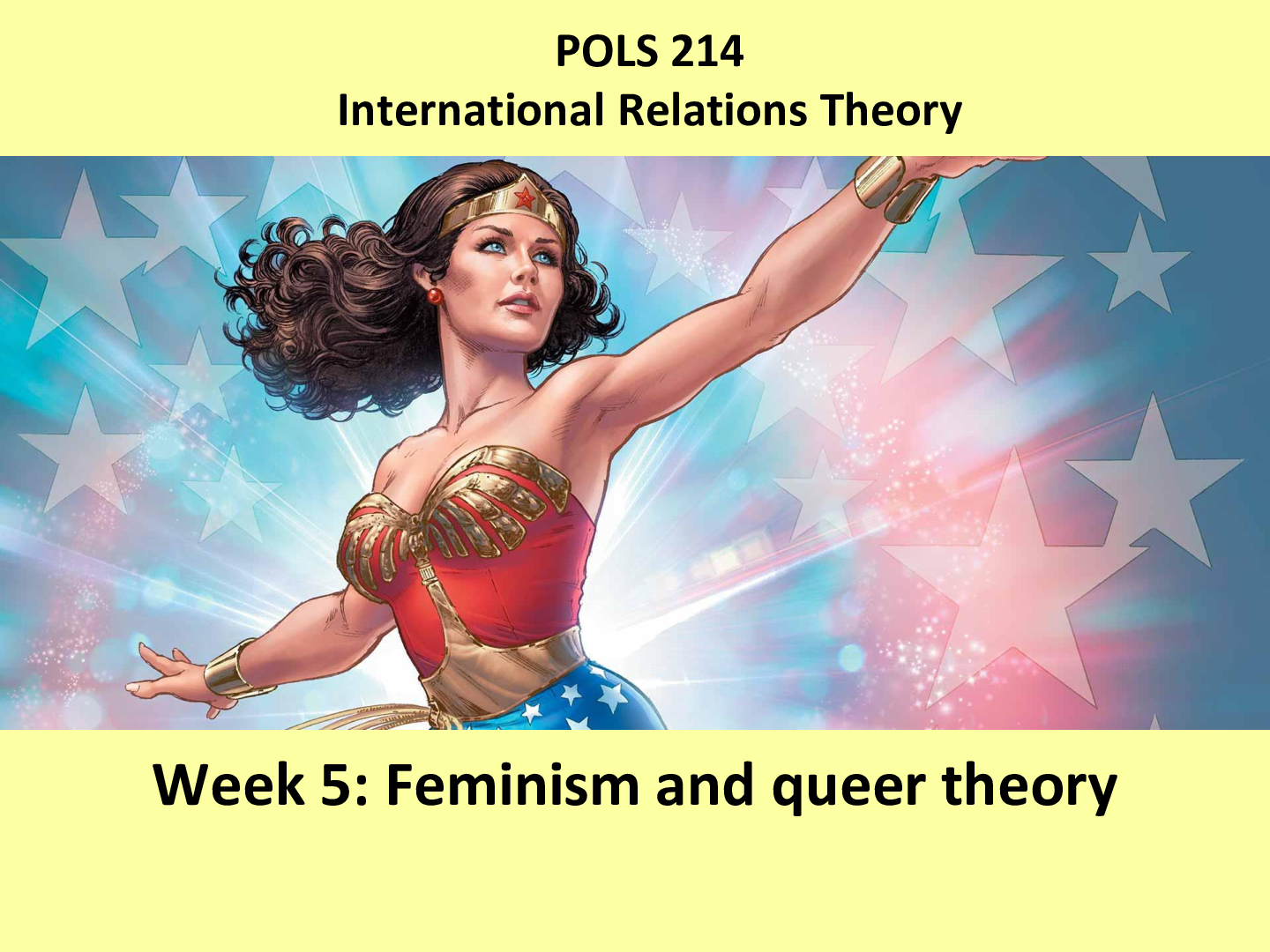Marketing > Presentation > Global Marketing: Importing, Exporting, and Sourcing. The Presentation (All)
Global Marketing: Importing, Exporting, and Sourcing. The Presentation
Document Content and Description Below
Learning Objectives 1. Compare and contrast export selling and export marketing. 2. Identify the stages a company goes through, and the problems it encounters, as it gains experience as an exporter... . 3. Describe the various national policies that pertain to imports and exports. 4. Explain the structure of the Harmonized Tariff System. 5. Describe the various organizations that participate in the export process. 6. Identify home-country export organization considerations. 7. Identify market-country export organization considerations. 8. Discuss the various payment methods that are typically used in trade financing. 9. Identify the factors that global marketers consider when making sourcing decisions. Copyright © 2017 Pearson Education, Ltd. 8-2Copyright © 2016 McGraw-Hill Education. All rights reserved. No reproduction or distribution without the prior written consent of McGraw-Hill Education. 3 ENTRY MODE CATEGORIES 1. EXPORT: Direct/Indirect 2. CONTRACTUAL AGREEMENT : Licensing/Franchising 3. STRATEGIC ALLIANCE: Equity/Non-equity 4. DIRECT FOREIGN INVESTMENT: Greenfields/BrownfieldsCopyright © 2016 McGraw-Hill Education. All rights reserved. No reproduction or distribution without the prior written consent of McGraw-Hill Education. 4Copyright © 2016 McGraw-Hill Education Export Selling vs. Export Marketing • Export selling involves selling the same product, at the same price, with the same promotional tools in a different place • Export marketing tailors the marketing mix to international customers Copyright © 2017 Pearson Education, Ltd. 8-7Operations • As organizations seek to move operations into other countries they need to make the basic decision regarding their level of involvement in the foreign markets. Two broad areas include export selling and export marketing. • • Export selling does not involve tailoring the product, the price, or the promotional material to suit the requirements of global markets. The only marketing mix element that differs is the “place;” that is, the country where the product is sold. This selling approach may work for some products or services; for unique products with little or no international competition, such an approach is possible. Similarly, companies new to exporting may initially experience success with selling. • Copyright © 2017 Pearson Education, Ltd. 8-8Export marketing • Export marketing targets the customer in the context of the total market environment. The export marketer does not simply take the domestic product “as is” and sell it to international customers. To the export marketer, the product offered in the home market represents a starting point. It is modified as needed to meet the preferences of international target markets; this is the approach the Chinese have adopted in the U.S. furniture market. Similarly, the export marketer sets prices to fit the marketing strategy and does not merely extend home country pricing to the target market. Charges incurred in export preparation, transportation, and financing must be taken into account in determining prices. Finally, the export marketer also adjusts strategies and plans for communications and distribution to fit the market. In other words, effective communication about product features or uses to buyers in export markets may require creating brochures with different copy, photographs, or artwork. As the vice president of sales and marketing of one manufacturer noted, “We have to approach the international market with marketing literature as opposed to sales literature.” Copyright © 2017 Pearson Education, Ltd. 8-9Requirements for Export Marketing • An understanding of the target market environment • The use of market research and identification of market potential • Decisions concerning product design, pricing, distribution and channels, advertising, and communications Copyright © 2017 Pearson Education, Ltd. 8-10Organizational Export Activities 1. The firm is unwilling to export; it will not even fill an unsolicited export order. 2. The firm fills unsolicited export orders but does not pursue unsolicited orders. Such a firm is an export seller. 3. The firm explores the feasibility of exporting (this stage may bypass Stage 2). 4. The firm exports to one or more markets on a trial basis. 5. Exporting is becoming increasingly important as companies in all parts of the world step up their efforts to supply and service markets outside their national boundaries. Research has shown that exporting is essentially a developmental process that can be divided into the following distinct stages. Copyright © 2017 Pearson Education, Ltd. 8-11Organizational Export Activities (Cont.) 5. The firm is an experienced exporter to one or more markets. 6. The firm pursues country- or region-focused marketing based on certain criteria 7. The firm evaluates global market potential for the “best” target markets. Copyright © 2017 Pearson Education, Ltd. 8-12The probability • The probability that a firm will advance from one stage to the next depends on different factors. Moving from stage 2 to stage 3 depends on management’s attitude toward the attractiveness of exporting and confidence in the firm’s ability to compete internationally. However, commitment is the most important aspect of a company’s international orientation. Before a firm can reach stage 4, it must receive and respond to unsolicited export orders. The quality and dynamism of management are important factors that can lead to such orders. Success in stage 4 can lead a firm to stages 5 and 6. A company that reaches stage 7 is a mature, geocentric enterprise that is relating global resources to global opportunity. To reach this stage requires management with vision and commitment. Copyright © 2017 Pearson Education, Ltd. 8-13Potential Export Problems Copyright © 2017 Pearson Education, Ltd. 8-14Top 10 Clothing Exporters 2011 ($ billions) Copyright © 2017 Pearson Education, Ltd. 8-15National Policies Governing Exports and Imports • Most nations encourage exports and restrict imports • In 2014, the total was $2.8 trillion • European Union trade, domestic and foreign, is $3 trillion + Copyright © 2017 Pearson Education, Ltd. 8-16 US based Zippo Manufacturing Co., was awarded the President’s “E” Star Award for export expansion in 2012.Imports • In 1997 total imports of goods and services by the United States passed the $1 trillion mark for the first time; in 2014, the combined figure was $2.8 trillion. • • China’s pace-setting economic growth in the Asia-Pacific region is reflected by trends in both exports and imports. Exports from China have grown significantly; and they are growing even now that China has joined the WTO. Historically, China protected its own producers by imposing double-digit import tariffs. These are being reduced as China complies with WTO regulations. • • For centuries, nations have combined two opposing policy attitudes toward the movement of goods across national boundaries. On the one hand, nations directly encourage exports; the flow of imports, on the other hand, is generally restricted. Copyright © 2017 Pearson Education, Ltd. 8-17Government Programs that Support Exports • Governments concerned about trade deficits or economic development should educate firms about possible gains from exporting • Done at the national, regional & local levels – After WWII, Japan’s trade ministry developed export strategies – The China triangle (People’s Republic, Taiwan, & Hong Kong), & the four tigers--Singapore, South Korea, Taiwan, & Hong Kong) learned from Japan and built strong export-based economies Copyright © 2017 Pearson Education, Ltd. 8-18Government Programs that Support Exports • Tax incentives • Subsidies • Governmental assistance • Free trade zones http://teamnafta.com/manufacturingresources-pages/2016/4/18/nafta-and-themaquiladora-program The Milan Furniture Fair held in April attracts 300,000 visitors from 160 countries . http://www.reedexpo.com/Our-Events/events-list/# Copyright © 2017 Pearson Education, Ltd. 8-19Export • Governments commonly use four activities to support export activities of national firms. First, tax incentives treat earnings from export activities preferentially either by applying a lower rate to earnings from these activities or by refunding taxes already paid on income associated with exporting. The tax benefits offered by export-conscious governments include varying degrees of tax exemption or tax deferral on export income, accelerated depreciation of export-related assets, and generous tax treatment of overseas market development activities. • Governments also support export performance by providing outright subsidies, which are direct or indirect financial contributions that benefit producers. Subsidies can severely distort trade patterns when less competitive but subsidized producers displace competitive producers in world markets. • • The third support area is governmental assistance to exporters. Companies can avail themselves of a great deal of government information concerning the location of markets and credit risks. Assistance may also be oriented toward export promotion. • • In an effort to facilitate exports, countries are designating certain areas as free trade zones (FTZ) or special economic zones (SEZ). These are geographic entities that offer manufacturers simplified customs procedures, operational flexibility, and a general environment of relaxed regulations. Copyright © 2017 Pearson Education, Ltd. 8-20Governmental Actions to Discourage Imports and Block Market Access • Tariffs: 3 Rs—rules, rate schedules, & regulations • Import controls • Nontariff barriers (hidden) – Quotas – Discriminatory procurement policies – Restrictive customs procedures – Arbitrary monetary policies – Restrictive administrative & technical regulations Copyright © 2017 Pearson Education, Ltd. 8-21Measures • Measures such as tariffs, import controls, and a host of nontariff barriers are designed to limit the inward flow of goods. Tariffs can be thought of as the “three R’s” of global business: rules, rate schedules (duties), and regulations of individual countries. • • A nontariff trade barrier (NTB) is any measure other than a tariff that is a deterrent or obstacle to the sale of products in a foreign market. NTBs are also known as hidden trade barriers. A quota is a government-imposed limit or restriction on the number of units or the total value of a particular product or product category that can be imported. Quotas are designed to protect domestic producers. In 2005, for example, textile producers in Italy and other European countries were granted quotas on 10 categories of textile imports from China. The quotas, which ran through the end of 2007, were designed to give European producers an opportunity to prepare for increased competition. Discriminatory procurement policies can take the form of government rules and administrative regulations that give local vendors priority. The Buy American Act of 1993 says federal agencies must buy American products unless a domestic product is not available, the cost is unreasonable, or it would not be in the public’s interest. Copyright © 2017 Pearson Education, Ltd. 8-22Customs procedures • Customs procedures are considered restrictive if they are administered in a way that makes compliance difficult and expensive. • • Discriminatory exchange rate policies distort trade in much the same way as selective import duties and export subsidies. As noted earlier, some Western policymakers have argued that China is pursuing policies that ensure an artificially weak currency which results in Chinese goods having a competitive price edge in world markets. Restrictive administrative and technical regulations can also create barriers to trade. These may take the form of antidumping regulations, product size regulations, and safety and health regulations. U.S. safety and pollution regulations in the auto industry have forced some auto makers to withdraw certain models and are generally expensive with which to comply. Copyright © 2017 Pearson Education, Ltd. 8-23Examples of Trade Barriers Copyright © 2017 Pearson Education, Ltd. 8-24Harmonized Tariff System • Developed by the World Customs Organization • Effective January 1989 • Adopted by most trading nations • Importers & Exporters have to determine the classification number for any product moved across borders • Import & export numbers are the same on Schedule B • Meant to simplify tariff procedures but problems still arise Copyright © 2017 Pearson Education, Ltd. 8-25Tariff Procedures • In spite of the progress made in simplifying tariff procedures, administering a tariff is an enormous burden. People who work with imports and exports must familiarize themselves with the different classifications and use them accurately. Even a tariff schedule of several thousand items cannot clearly describe every product traded globally. Plus, the introduction of new products and new materials used in manufacturing processes creates new problems. Often, determining the duty rate on a particular article requires assessing how the item is used or determining its main component material. Two or more alternative classifications may have to be considered. A product’s classification can make a substantial difference in the duty applied. For example, is a Chinese-made X-Men action figure a doll or a toy? For many years, dolls were subject to a 12 percent duty when imported into the United States; the rate was 6.8 percent for toys. Moreover, action figures that represent nonhuman creatures such as monsters or robots were categorized as toys and thus qualified for lower duties than human figures that the Customs Service classified as dolls. Duties on both categories have been eliminated; however, the Toy Biz subsidiary of Marvel Enterprises spent nearly 6 years on an action in the U.S. Court of International Trade to prove that its X-Men action figures do not represent humans. Although the move appalled many fans of the mutant superheroes, Toy Biz hoped to be reimbursed for overpayment of past duties made when the U.S. Customs Service had classified imports of Wolverine and his fellow figures as dolls. Copyright © 2017 Pearson Education, Ltd. 8-26Copyright © 2017 Pearson Education, Ltd. 27 https://www.homeaffairs.gov.au/busi/cargo-support-trade-and-goods/importinggoods/tariff-classification-of-goods/current-tariff-classificationTariff Systems • Single-column tariff – Simplest type of tariff – Schedule of duties in which rate applies to imports from all countries on the same basis • Two-column tariff – General duties plus special duties apply • Normal Trade Relations (NTR) means that countries in the WTO apply the Column 1 rates most favorable or lowest rates to all nations (with exceptions). Column 2 rates are for non-WTO countries Copyright © 2017 Pearson Education, Ltd. 8-28Tariff systems • Tariff systems provide either a single rate of duty for each item applicable to all countries or two or more rates, applicable to different countries or groups of countries. Tariffs are usually grouped into two classifications. The single-column tariff is the simplest type of tariff; a schedule of duties in which the rate applies to imports from all countries on the same basis. Under the twocolumn tariff (Table 8-4), column 1 includes “general” duties plus “special” duties indicating reduced rates determined by tariff negotiations with other countries. Copyright © 2017 Pearson Education, Ltd. 8-29Sample Rates of Duty for U.S. Imports Copyright © 2017 Pearson Education, Ltd. 8-30• Under the two-column tariff, column 1 includes “general” duties plus “special” duties indicating reduced rates determined by tariff negotiations with other countries. Rates agreed upon by “convention” are extended to all countries that qualify for normal trade relations (NTR; formerly most-favored nation or MFN) status within the framework of the WTO. Under the WTO, nations agree to apply their most favorable tariff or lowest tariff rate to all nations—subject to some exceptions— that are signatories to the WTO. Column 2 shows rates for countries that do not enjoy NTR status. Copyright © 2017 Pearson Education, Ltd. 8-31Preferential Tariff • Reduced tariff rate applied to imports from certain countries • GATT prohibits the use, with three exceptions: – Historical preference arrangements already existed – Preference is part of formal economic integration treaty – Industrial countries are permitted to grant preferential market access to LDCs [Show More]
Last updated: 8 months ago
Preview 6 out of 65 pages

Loading document previews ...
Buy this document to get the full access instantly
Instant Download Access after purchase
Buy NowInstant download
We Accept:

Reviews( 0 )
$4.00
Can't find what you want? Try our AI powered Search
Document information
Connected school, study & course
About the document
Uploaded On
Oct 23, 2019
Number of pages
65
Written in
Additional information
This document has been written for:
Uploaded
Oct 23, 2019
Downloads
0
Views
209














